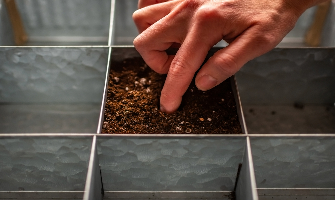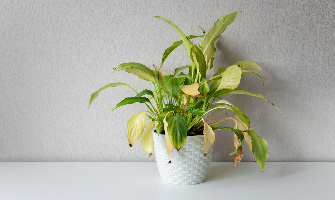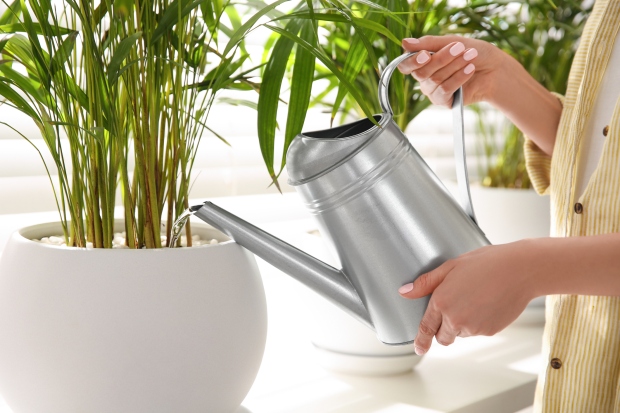Test before Watering
Before watering, please poke a pencil two inches or three down into the soil, then pull it out. If the pencil is still dry, then it means the soil is dry now, and it’s better to water. Otherwise, you can try this again the next day. You can also perform this test with your finger.

A Few Signs Your Plant Needs More Water
When a plant needs water, its leaves may change color, or feel brittle to the touch.
In those over-watering cases, the leaves will likely turn brown or yellow or have blisters.
Moreover, if you see mushy stems, mold in soil or the whole wilting plant, it means the plant is badly over-watered

How to Water Your Plant:
Bottom Watering
If you grow false in pots, it’s an effective method to let the roots of your plants get water and grow stronger:
- Place your potted plant in a plant saucer/container, and fill the saucer with water.
- Keep filling the saucer/container until the water stops getting absorbed into the soil through drainage holes.
- Dispose of any excess water from the saucer or move the potted plant out of the container to avoid excess moisture and root rot.
This method is also suitable for when the soil is compacted due to dryness, or when watering from above cannot make the soil fully absorb moisture.
Watering from the top
The simplest and the best way to water most plants:
- Pour water near the roots, as they are what absorb the water.
- Avoid pouring water on leaves and stems, because the extra moisture will make them more susceptible to diseases.
- Continue pouring until the water runs out through the drainage holes in the bottom of the pot.
- If you have a saucer under the flowerpot, make sure you dispose of any collected water afterward to avoid excess moisture and root rot.
As for potted plants, the amount of water to use should be between ¼ and ⅓ of the pot’s volume.

Some Expert Tips for Watering Plants
Choose the Right Kind of Water
The water you use to water your plants should be cool or at room temperature. Water that is too hot may do more harm to your plants than good.
Water Needs Change with the Seasons
During summer, when the weather is the hottest, you will likely need to water your plants more than usual. The hot temperatures can cause your soil to dry out more quickly, meaning your plant’s roots won’t have access to the moisture they need. The opposite is true in winter. During winter, most plants are in a dormant state and won’t require water as they are not actively growing.
Watering in the Morning is Usually Best
The time of day can affect your watering schedule. In many instances, watering in the morning is best. Watering in the morning ensures your plants will have time to soak up the moisture they need. Watering in the morning also gives the plant’s leaves a chance to dry out throughout the day rather than accumulate excessive moisture that can cause disease. Watering during midday, especially in summer, is not always a wise idea as the strong sun can cause the water to evaporate before your plants can use it.
Overwatering is a Serious Concern
Not giving your plants water will usually cause them to die but giving too much water is a serious problem too. Overwatering can lead to complications such as root rot and may even kill your plants. Study the water preferences of the species you grow to get the watering volume just right.